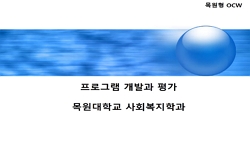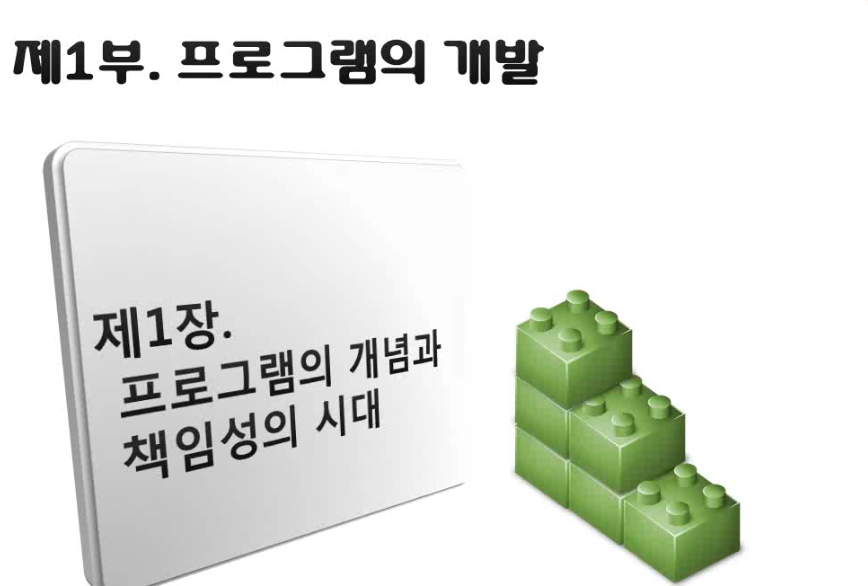미술관은 교육적 역할이 강조되면서 사회교육기관으로서의 학습자 중심의 교육을 더욱 요구하게 되었다. 본 연구는 미술관이 사회교육기관으로서의 역할이 강조되고 있는 현재의의 사립미...
http://chineseinput.net/에서 pinyin(병음)방식으로 중국어를 변환할 수 있습니다.
변환된 중국어를 복사하여 사용하시면 됩니다.
- 中文 을 입력하시려면 zhongwen을 입력하시고 space를누르시면됩니다.
- 北京 을 입력하시려면 beijing을 입력하시고 space를 누르시면 됩니다.
사립미술관 체험교육 프로그램의 현황과 개선 방안 : 사립미술관 뮤지엄 페스티벌을 중심으로 = The Status of Experience Education Program of Private Art Museum and Improvement Proposal : Focusing on a Private Art Museum Festival
한글로보기https://www.riss.kr/link?id=T11475237
- 저자
-
발행사항
서울 : 국민대학교 행정대학원, 2008
-
학위논문사항
학위논문(석사) -- 국민대학교 행정대학원 , 행정학과 미술관·박물관학전공 , 2008. 8
-
발행연도
2008
-
작성언어
한국어
- 주제어
-
KDC
373.5
-
발행국(도시)
서울
-
형태사항
vi, 85 p. ; 26cm
-
일반주기명
참고문헌 : p.77-80
- 소장기관
-
0
상세조회 -
0
다운로드
부가정보
국문 초록 (Abstract)
미술관에서 이루어지는 교육 프로그램은 그 형태가 급 변화하고 있고 관람자 역시 박물관, 미술관에 새로운 대안을 요구하고 있다. 박물관, 미술관은 문화와 예술을 멀게만 느끼는 학습자들에게 직접 대상을 경험하게 하고 구체적으로 감각적 사고를 향상시켜 아름다움을 즐길 수 있는 문화인으로 교육시켜야할 의무가 있다. 이러한 배경에서 사립미술관들은 미술관에서 이루어지는 교육을 ‘체험교육 그리고 놀이’라는 프로그램을 통해 미술관 교육의 확장을 꾀하였다.
기존의 연구경향은 교육학적 분석을 토대로 교육프로그램 그 자체만을 연구하였다. 그러나 현재 운영되었던 교육프로그램의 현황은 파악되지 못하고 있는 실정이다. 이러한 상황에서 사립미술관의 체험교육 프로그램에 참여하는 관람객을 대상으로 관람객의 연령, 관심분야, 프로그램의 진행시간, 주제, 내용의 분석을 토대로 체험교육 프로그램을 효과를 알아보고자 한다.
본 연구에서는 사립미술관 체험교육프로그램 현황을 파악하고자 ‘체험교육 그리고 놀이’에 참여중인 사립미술관을 선정하여 조사하였다. 조사결과 총 36개의 사립미술관의 사례분석을 통해 체험교육 프로그램의 현황을 파악하고 문제점과 개선방안을 제시하였다.
이 연구의 목표는 사립미술관 체험교육 프로그램의 현황을 파악하여 사립미술관의 체험교육 프로그램 활성화에 기여하고자 한다. 교육의 역할이 필수적으로 요구되는 이 시대에 사립미술관은 확립된 체험교육을 통해 사회교육기관으로서의 제 역할을 다하길 바란다.
미술관은 교육적 역할이 강조되면서 사회교육기관으로서의 학습자 중심의 교육을 더욱 요구하게 되었다. 본 연구는 미술관이 사회교육기관으로서의 역할이 강조되고 있는 현재의의 사립미술관 체험교육 프로그램 현황을 파악하였다. 초기의 미술관은 그 지역의 유물 수집과 보존 그리고 연구보고서, 전시 도록, 연구 서적, 간행 등의 학술 활동에 비중을 두었으나 오늘날의 미술관은 연구. 전시. 교육활동을 포함하는 종합적 문화기관으로서 독자적인 활동을 하고 있다.
미술관에서 이루어지는 교육 프로그램은 그 형태가 급 변화하고 있고 관람자 역시 박물관, 미술관에 새로운 대안을 요구하고 있다. 박물관, 미술관은 문화와 예술을 멀게만 느끼는 학습자들에게 직접 대상을 경험하게 하고 구체적으로 감각적 사고를 향상시켜 아름다움을 즐길 수 있는 문화인으로 교육시켜야할 의무가 있다. 이러한 배경에서 사립미술관들은 미술관에서 이루어지는 교육을 ‘체험교육 그리고 놀이’라는 프로그램을 통해 미술관 교육의 확장을 꾀하였다.
기존의 연구경향은 교육학적 분석을 토대로 교육프로그램 그 자체만을 연구하였다. 그러나 현재 운영되었던 교육프로그램의 현황은 파악되지 못하고 있는 실정이다. 이러한 상황에서 사립미술관의 체험교육 프로그램에 참여하는 관람객을 대상으로 관람객의 연령, 관심분야, 프로그램의 진행시간, 주제, 내용의 분석을 토대로 체험교육 프로그램을 효과를 알아보고자 한다.
본 연구에서는 사립미술관 체험교육프로그램 현황을 파악하고자 ‘체험교육 그리고 놀이’에 참여중인 사립미술관을 선정하여 조사하였다. 조사결과 총 36개의 사립미술관의 사례분석을 통해 체험교육 프로그램의 현황을 파악하고 문제점과 개선방안을 제시하였다.
이 연구의 목표는 사립미술관 체험교육 프로그램의 현황을 파악하여 사립미술관의 체험교육 프로그램 활성화에 기여하고자 한다. 교육의 역할이 필수적으로 요구되는 이 시대에 사립미술관은 확립된 체험교육을 통해 사회교육기관으로서의 제 역할을 다하길 바란다.
다국어 초록 (Multilingual Abstract)
The educational programs provided by art museums are changing in their forms, and the spectators also require new measures to museums and art museums, which have an obligation to provide learners who are unfamiliar with culture and arts with an opportunity of direct experience of the subjects and with education in which the learners to improve concretely sensible thoughts and to enjoy beauty as cultured people. In this context, private art museums have attempted to extend their educational roles through a program named 'Experience Education and Play.'
The existing researches tend to study educational program itself based on pedagogical analysis, but are insufficient to understand the present condition of educational programs provided. Therefore, the purpose of this study is to identify the effects of the experience education programs of art museums through analyzing the age group and interests of spectators and the time, themes, and contents of the programs when the subjects of this study are the spectators.
In this study, art museums participating in 'experience education and play' are selected to be investigated in order to understand the present condition of the experience education programs of art museums. As a result, a total of 36 art museums were included in case analysis, and the author understood the present condition of the experience education programs and presented problems and measures for improvement.
The purpose of this study is to understand the present condition of the experience education programs of art museums to contribute to the activation of the experience education programs of art museums. Given that the role of education is required recently, art museums should play a role as a social educational institution through established experience education.
As the educational role of Art museums is being emphasized, education centered on learners as a social educational institution is required more. In this study, the author identified the present status of experience education programs of private art mu...
As the educational role of Art museums is being emphasized, education centered on learners as a social educational institution is required more. In this study, the author identified the present status of experience education programs of private art museums whose role as a social educational institution is being emphasized. At first art museums usually play a scientific role in collecting and preserving local relics and publishing research reports, illustration books, and research books. However, recent art museums uniquely function as a general cultural institution including research, exhibition, and education.
The educational programs provided by art museums are changing in their forms, and the spectators also require new measures to museums and art museums, which have an obligation to provide learners who are unfamiliar with culture and arts with an opportunity of direct experience of the subjects and with education in which the learners to improve concretely sensible thoughts and to enjoy beauty as cultured people. In this context, private art museums have attempted to extend their educational roles through a program named 'Experience Education and Play.'
The existing researches tend to study educational program itself based on pedagogical analysis, but are insufficient to understand the present condition of educational programs provided. Therefore, the purpose of this study is to identify the effects of the experience education programs of art museums through analyzing the age group and interests of spectators and the time, themes, and contents of the programs when the subjects of this study are the spectators.
In this study, art museums participating in 'experience education and play' are selected to be investigated in order to understand the present condition of the experience education programs of art museums. As a result, a total of 36 art museums were included in case analysis, and the author understood the present condition of the experience education programs and presented problems and measures for improvement.
The purpose of this study is to understand the present condition of the experience education programs of art museums to contribute to the activation of the experience education programs of art museums. Given that the role of education is required recently, art museums should play a role as a social educational institution through established experience education.
목차 (Table of Contents)
- 제1장 서론 = 1
- 제1절 연구의 목적 = 1
- 제2절 연구의 범위와 방법 = 3
- 1. 연구의 범위 = 3
- 2. 연구의 방법 = 4
- 제1장 서론 = 1
- 제1절 연구의 목적 = 1
- 제2절 연구의 범위와 방법 = 3
- 1. 연구의 범위 = 3
- 2. 연구의 방법 = 4
- 제2장 미술관의 기본개념 = 5
- 제1절 미술관의 개념과 역사 = 5
- 제2절 미술관 교육의 특성과 역할 = 7
- 1. 미술관 교육의 정의 = 7
- 2. 미술관 교육의 특수성 = 7
- 제3장 미술관 교육에 대한 이론적 고찰 = 8
- 제1절 미술관 교육의 이론적 배경연구 = 8
- 1. 지식의 이론 = 9
- 2. 배움의 이론 = 10
- 3. 교수 이론 = 12
- 제2절 미술관 체험교육 프로그램의 요소 = 13
- 1. 미술관적 요소 = 13
- 2. 교육적 요소 = 17
- 3. 주체적 요소 = 19
- 제3절 미술관 체험과 교육의 의미 = 22
- 제4장 미술관 체험교육 프로그램 현황과 분석틀 = 25
- 제1절 분석의 틀 = 25
- 제2절 사립미술관 체험교육 프로그램 현황 = 27
- 1. 지역별 체험교육 프로그램 현황 = 28
- 2. 체험교육 프로그앰 진행 및 사례조사 = 55
- 3. 사립미술관 체험교육 프로그램 현황분석 = 63
- 제3절 사립미술관 교육 프로그램의 문제점 = 68
- 제5장 미술관 체험교육 프로그램 개선방안 = 71
- 제1절 통합적 체험교육 프로그램 = 71
- 제2절 사회, 학교 연계 프로그램의 활성화 = 73
- 제6장 결론 = 75












